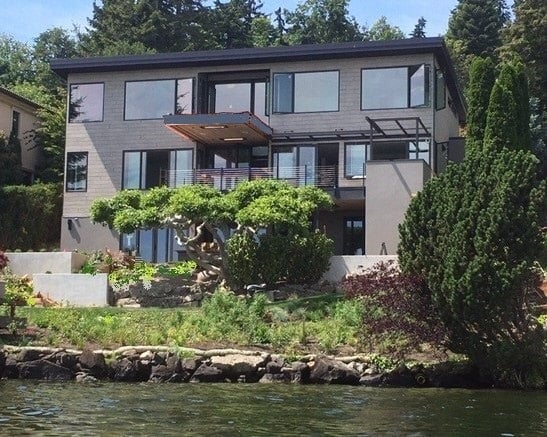
Related Posts
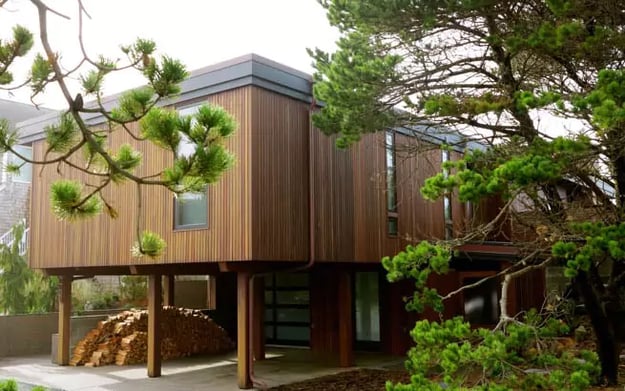


Choosing between exterior siding materials is important to the success of your project. Real wood siding has been a natural choice for centuries. Many of the popular man-made siding materials are designed to look like wood. Popular choices are are real wood siding, HPL siding, composite siding, vinyl siding, and fiber cement siding.

A backyard view of Ipe wood vertical siding and the Climate-Shield rainscreen system
ach of these siding options has its strengths and weaknesses. It pays to do a little research and learn about your best siding options. Gain a little knowledge, since each material has advantages and disadvantages. At the end of the day, it comes down to 'what's important to you' that matters.
To decide between them, consider what your priorities are:
A popular low-cost option, vinyl siding comes in a wide variety of styles that hope to mimic the grain of wood in a more cost-effective way.
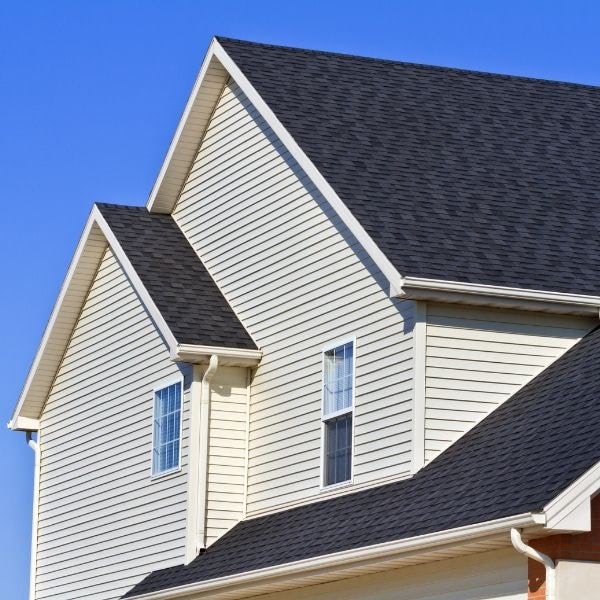
Vinyl siding gives a consistent painted wood look with a low budget investment.
Pros: Vinyl is a good budget option when you are looking for a low initial investment. Mostly made from PVC, it is also insect resistant.
Cons: Vinyl siding expands and contracts according to the temperature, which stresses the edges and can cause warping. It may also need periodic inspection and maintenance by a professional to be sure all the siding edges stay sealed. This is to prevent water infiltration which results in rot and mold. Vinyl siding has a lower impact resistance than most other options.
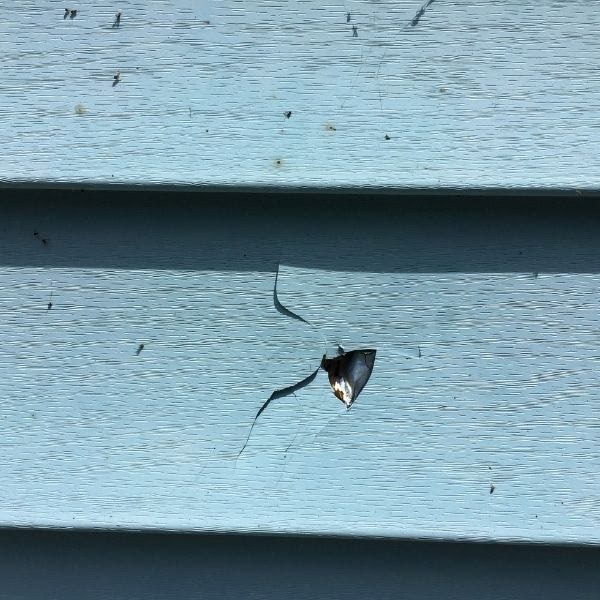
Vinyl siding is not very impact resistant. Storms, branches and baseballs are a hazard to your exterior
One of the costlier non-wood options, fiber cement siding is made from a combination of wood pulp and Portland cement. It’s attached to the side of a building using nails.
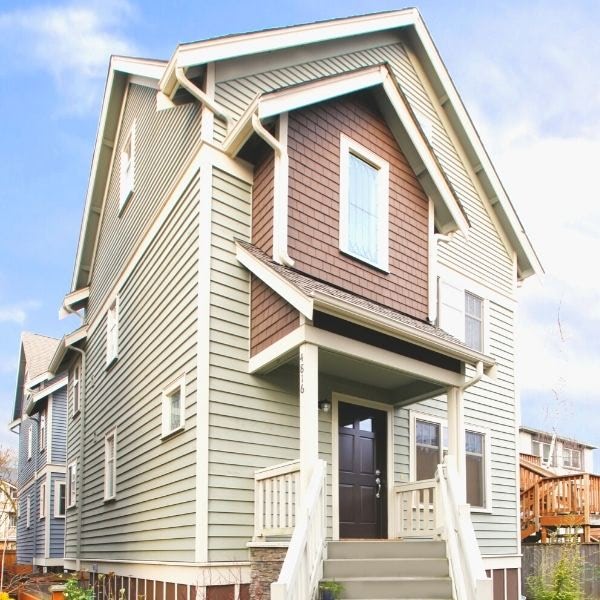
A townhouse with fiber cement siding shows the color and style options available.
Pros: One of the advantages of fiber cement siding over other materials is that it can be painted and repainted. You can also purchase it pre-painted.
Cons: While fiber cement is durable, it has its downsides. Fiber cement has low flexibility and low impact resistance, which can lead to cracking. It can absorb water, leading to mold and rot. Regular painting and caulking will be required as needed, as part of routine maintenance of this material.
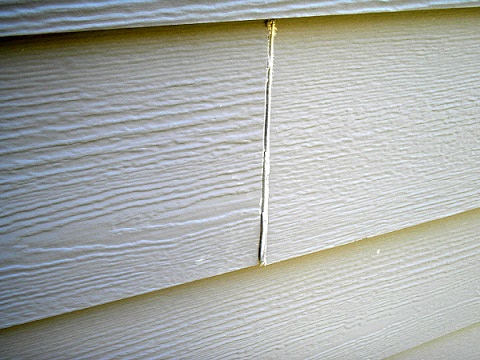
Fiber cement siding is prone to breakage, unsealed edges over time may allow water in
There are a variety hardwood rain screen siding options to suit your specs and styles preferences. Ipe hardwood siding, FSC Machiche, Garapa, Cumaru, and Thermally modified siding are all long lasting natural wood siding options.
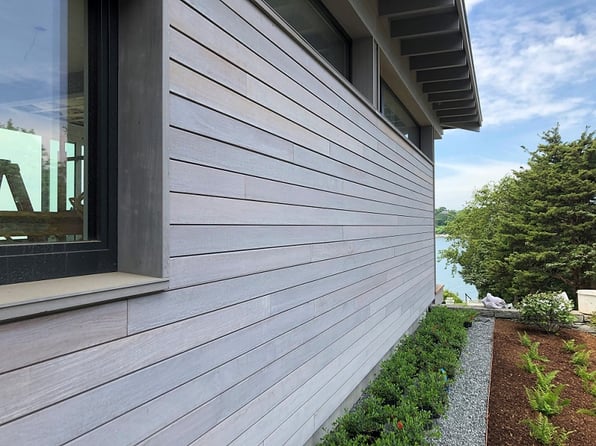
High density hardwood sidings last long and are naturally beautiful
Pros: These hardwoods are naturally resistant to rot and insects and do not need any chemical pre-treatment. The Climate-Shield® Rainscreen System allows moisture to escape, so there is no worry about trapped moisture, and no caulking and sealing involved in maintenance. It can be easily cleaned as needed. You can let your hardwood siding naturally age to a soft silver gray patina for a 'low maintenance siding option.
Cons: A costlier initial investment, but the return is high and life-cycle costs are remarkably low. Occasional refinishing is required to maintain the 'like new' wood look.
Trespa Pure NFC® sidings are well-respected around the world. HPL stands for High Pressure Laminate and this is a very high quality wood-look siding option.
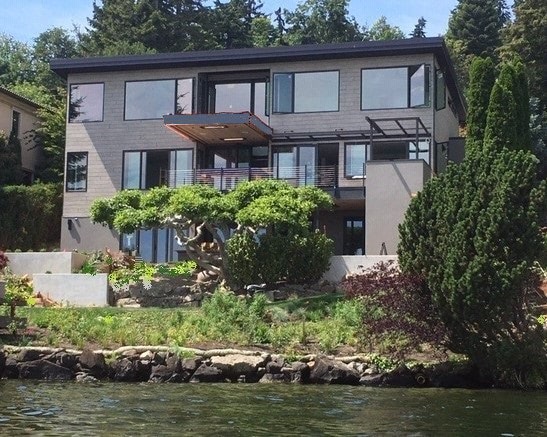
Pros: Pura siding is very high quality, looks like real wood and requires no finishing. Mataverde guarantees their performance and color stability for ten years. You can take your choice from eight attractive wood décor color options and more. Trespa has the warm look of natural wood variations in color and grain. Exceptionally low maintenance. Regular maintenance is limited to an occasional cleaning as needed. Trespa Pura NFC siding also has an extremely high impact resistance, weather resistance, high fade resistance and much more.
Learn more about Trespa quality testing here.
Cons: Trespa may be a higher initial investment that some other siding options. However, the lifetime cost is proven to be much lower than vinyl or other lower cost alternatives.
Whether you are a builder, siding contractor, an architect, design professional, developer, property owner or homeowner, get in touch with us for expert advice about what kind of siding is right for your project. Whether your priority is making the building pop, resisting the elements, or coming in on time and under budget, get in touch with us to find out how we can help you. Contact our team today.
RELATED:


